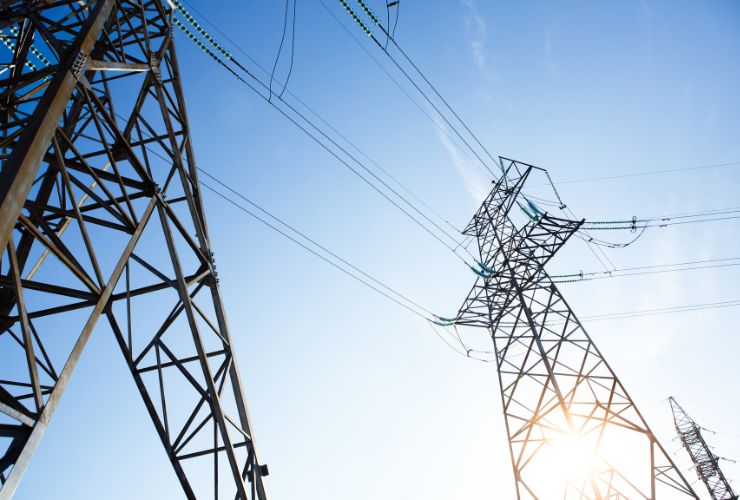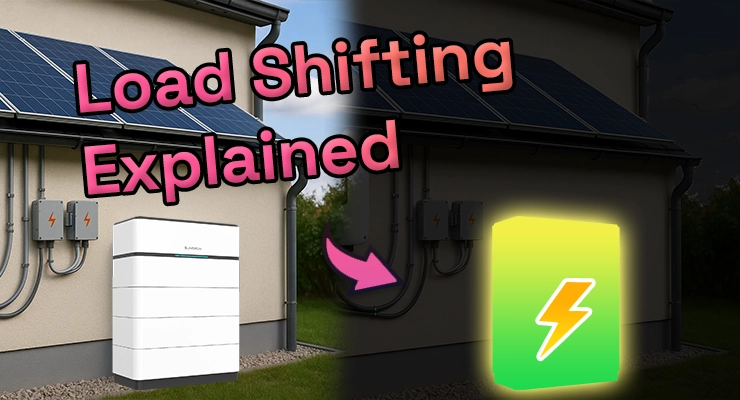Fast read
Load shifting is a simple yet powerful strategy of changing when you use electricity to save money and reduce strain on the power grid. A home battery allows you to store cheap energy—either free energy from your solar panels during the day or low-cost electricity from the grid overnight—and use it during expensive evening peak hours. This tactic transforms your battery from a simple backup device into an active tool for cutting your power bills and maximising your solar investment.
What is load shifting, and how do batteries enable it?
If you’re exploring solar and batteries, you’ve likely come across the term “load shifting.” While it might sound technical, it’s one of the most practical and financially savvy ways to use a home battery system in Australia. It’s a strategy that helps you take control of your energy bills by being smart about not just how much power you use, but when you use it.
At its core, load shifting is about breaking the habit of buying expensive electricity from the grid during peak times. A solar battery is the key piece of technology that makes this possible, giving you more energy independence and helping you get the most out of your investment.
What exactly is load shifting?
Load shifting is the process of moving your electricity consumption from high-demand, expensive periods to times when electricity is cheaper or even free. In Australia, electricity prices often vary throughout the day based on a ‘time-of-use’ (ToU) tariff structure.
These tariffs typically divide the day into three main periods:
- Peak: Usually on weekday afternoons and evenings (e.g., 2 pm to 8 pm) when demand is highest and electricity is most expensive.
- Off-Peak: Late at night and early in the morning (e.g., 10 pm to 7 am) when demand is lowest and electricity is cheapest.
- Shoulder: The times in between peak and off-peak, with a moderate price.
Without a battery, a typical household with solar panels still has to buy expensive electricity from the grid every evening after the sun goes down. With load shifting, you actively use your battery to avoid this.
How a solar battery makes load shifting possible
A battery energy storage system is what gives you the power to load shift effectively. It acts as your personal energy reserve, allowing you to store electricity when it’s cheap and deploy it when it’s expensive. This process, also known as energy arbitrage, is managed by the system’s smart inverter.
Here’s how it works:
- Storing cheap energy: Your battery can be charged from two main sources. The most common is storing excess, free energy generated by your solar panels during the middle of the day. Alternatively, on cloudy days or during winter, your system can be programmed to charge the battery from the grid during the cheapest off-peak hours, usually overnight.
- Discharging during expensive peaks: The smart inverter, which acts as the brain of your system, then tells the battery to discharge that stored energy during the evening peak period. Instead of buying electricity from the grid for, say, 50 cents per kilowatt-hour (kWh), you use the energy you stored earlier for a fraction of the cost, or for free. Modern systems from brands like Tesla or those using advanced hybrid inverters from companies like Sungrow allow for easy programming of these charge and discharge cycles, often through a simple app.

The primary benefits: Saving money and supporting the grid
The advantages of load shifting with a battery are significant for both your wallet and the wider community.
For you, the homeowner, the primary benefit is financial. By avoiding the highest electricity rates every day, you can dramatically reduce your power bills. Instead of selling your excess solar for a low feed-in tariff (which is often much lower than the peak import rate), you store that value for your own use, maximising your self-consumption and return on investment.
For the grid, the benefits are about stability and efficiency. When thousands of homes use their batteries to reduce their demand during peak hours, it lessens the overall strain on the electricity network. This helps prevent power outages and reduces the need for costly infrastructure upgrades, which ultimately keeps prices down for everyone.
A real-world example of how the numbers stack up
Imagine your time-of-use tariff has the following example rates:
- Peak rate (4 pm – 9 pm): 50c per kWh
- Off-peak rate (10 pm – 7 am): 20c per kWh
- Solar feed-in tariff: 5c per kWh
On a typical evening, your family might use 8 kWh of electricity for cooking, lighting, and entertainment. Without a battery, that would cost you $4.00 (8 kWh x 50c).
With a battery that stores 8 kWh of free solar energy during the day, your cost for that same period would be $0. You’ve saved $4.00 in a single evening. If your battery is charged from the grid during off-peak hours, it would cost just $1.60 (8 kWh x 20c), still saving you $2.40. Over a year, these savings add up significantly.
Beyond your home: Virtual Power Plants (VPPs)
Load shifting with an individual battery is powerful, but its benefits multiply when batteries are connected into a network known as a Virtual Power Plant (VPP). A VPP is a cloud-based system that pools the stored energy of hundreds or thousands of home batteries.
By joining a VPP, you can receive payments or bill credits for allowing a VPP operator to use a small portion of your stored energy to support the grid during major demand spikes. This provides another revenue stream from your battery and plays a crucial role in stabilising the grid with clean energy, reducing the reliance on fossil-fuel power plants.
Making the smart choice
Load shifting transforms a battery from a passive storage unit into a dynamic financial tool. It allows you to actively manage your energy costs by buying low and using high, all automated by your system’s smart technology.
When discussing options with an installer, be sure to ask how their proposed system can be programmed for load shifting based on your specific electricity tariff. A well-configured system is key to unlocking the full savings potential of your investment. If you’re looking for accredited local experts who understand these strategies, Your Energy Answers offers independent guidance to help you make a confident and informed decision.



